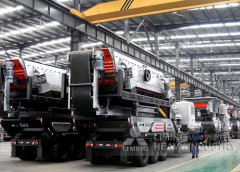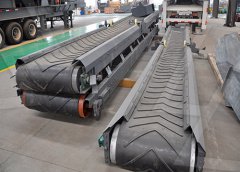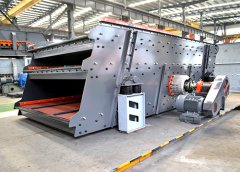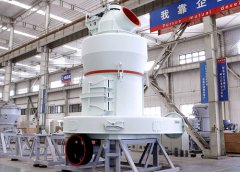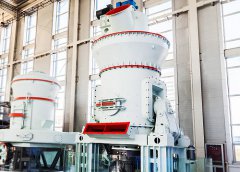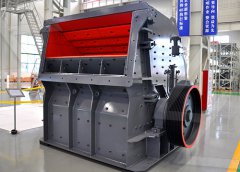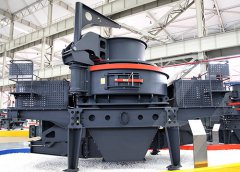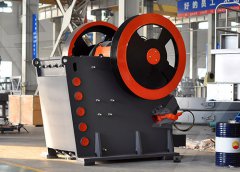
Formation and Growth of Au Nanoparticles inside Live Alfalfa
This is the first report on the formation of gold nanoparticles by living plants and opens up new and exciting ways to fabricate nanoparticles. It shows how it is possible to link materials science and biotechnology in the new emerging field of nanobiotechnology.Ordinary alfalfa plants are being used as miniature gold factories that one day could provide the nanotechnology industry with a continuous harvest of gold Scientists Use Alfalfa Plants To Harvest Nanoparticles Of Gold
احصل على السعر
Harvesting Gold Nanoparticles WIth Alfalfa Plants Slashdot
Rocky Mudbutt writes: "An international research team from the University of Texas-El Paso (UTEP) and Mexico advanced the work at the Stanford Synchrotron Radiation Laboratory Akintelu S.A., Olugbeko S.C., Folorunso A.S. A review on synthesis, optimization, characterization and antibacterial application of gold nanoparticles Environmentally Safe Biosynthesis of Gold Nanoparticles Using
احصل على السعر
Nanoparticulate material delivery to plants ScienceDirect
The formation and growth of gold nanoparticles [Au NPs] inside live alfalfa plants and sesbania seedlings grown in gold enriched media was reported [46], [47]. There is a lot of evidence that supports the synthesis of gold nanoparticles in living plants. In this study, the bioreduction of Au ions to Au The effects of three types of alfalfa plants Springer
احصل على السعر
Gold Nanoparticles by Alfalfa Plants
Recently, a team working at SSRL lead by Professor Jorge Gardea-Torresdey from the University of Texas at El Paso have shown that ordinary alfalfa plants can accumulate The first report of plants synthesizing gold or silver nanoparticles appeared when alfalfa seedlings were shown to uptake gold or silver from metals Synthesis of plant-mediated gold nanoparticles and catalytic role
احصل على السعر
Anisotropic gold nanoparticles and gold plates
Traditional methods for the synthesis of gold nanoparticles include the reduction of the gold tetrachloroaurate ion (AuCl 4 −) using several reducing-stabilizing sity in the resulting gold nanoparticles. This study reports a biosynthesis of anisotropic nanoparticles and plates using alfalfa biomass extracts as reducing agents prepared Anisotropic gold nanoparticles and gold plates biosynthesis using
احصل على السعر
(PDF) Synthesis of metal nanoparticles in living
The majority of research has investigated ex vivo synthesis of nanoparticles in plants, Brooks RR, Stewart RB, Simcock R, 1998. Harvesting a. crop of Recovery of gold(III) by alfalfaAlfalfa plants were grown in an AuCl4 rich environment. The absorption of Au metal by the plants was confirmed by X-ray absorption studies (XAS), and transmission electron microscopy (TEM). Atomic resolution analysis confirmed the nucleation and growth of Au nanoparticles inside the plant and that the Au nanoparticles are in a crystalline Formation and Growth of Au Nanoparticles inside Live Alfalfa Plants
احصل على السعر
Plant-Based Synthesis of Gold Nanoparticles and Theranostic
For example, the gold nanoparticles produced using plant extracts had bands at 617 cm −1, 1125 cm −1, 1376 cm −1, 1658 cm −1, and 3278 cm −1 in their FTIR pattern [104,105,106,107,108,109]. The aromatic hydroxyl and benzene rings were assigned bands at 3402 cm −1,1606 cm −1,and 1518 cm −1,indicating that the extract contains Abstract This review deals with the influence of gold nanoparticles on physiological processes (responses) in higher plants. Gold nanoparticles can affect a lot of processes in the plant organism, including growth rate, parameters of water exchange, activity of the photosynthetic apparatus and the antioxidant system, and expression of Gold Nanoparticles in Plant Physiology: Principal Effects and Prospects
احصل على السعر
Toxicity Assessment of Gold Ions and Gold Nanoparticles on Plant
Gold nanoparticles (AuNPs) are used in diverse fields of study, including biotechnology, drug targeting, the food industry, pharmaceuticals, and many more. They are also extensively employed in agricultural activities to raise productivity and boost crop production. It has been shown that exposure of the plant to Au ions or AuNPs exhibits Figure 3. (a) Low-magnification TEM image of the alfalfa shoot showing aggregates of gold nanoparticles. The scale is shown in the image. (b) X-ray EDS analyses confirming that the nanoparticles are constituted by pure Au. (c) Histogram showing the Au nanoparticle size distribution in a typical alfalfa sample. "Formation Formation and Growth of Au Nanoparticles inside Live Alfalfa Plants
احصل على السعر
Nanoparticle Interaction with Plants SpringerLink
The interaction of plants with nanoparticles is a relatively recent field of study. The effects of nanoparticle exposure on plants may range from subtle changes in the soil environment to changes in plant morphology, physiology, and genetics (Deng et al. 2014).In order to determine the phytotoxicity of nanoparticles some biological end Oat (Avena sativa) biomass was studied as an alternative to recover Au(III) ions from aqueous solutions and for its capacity to reduce Au(III) to Au(0) forming Au nanoparticles. To study the binding trend of Au(III) to oat and the possible formation of Au nanoparticles, the biomass and a solution of Au(III) were reacted for a period of 1 h at [PDF] Size controlled gold nanoparticle formation by Avena sativa
احصل على السعر
Role of gold nanoparticles in advanced biomedical applications
Abstract. Gold nanoparticles (GNPs) have generated keen interest among researchers in recent years due to their excellent physicochemical properties. In general, GNPs are biocompatible, amenable to desired functionalization, non-corroding, and exhibit size and shape dependent optical and electronic properties. These excellent properties of GNPsNanoparticles, despite, improving the plant health, also meet the increasing demand for high yield in agriculture. This review is mainly focused on the limitations of chemicals and potential ofNanoparticles: a safe way towards fungal diseases ResearchGate
احصل على السعر
Engineered Gold Nanoparticles and Plant
Plants exposed to gold and gold nanoparticles have been demonstrated to exhibit both positive and negative alfalfa plant s. (1998) Harvesting a crop. of gold in plants. Nature 395:553Gardea-Torresdey et al. (1999) reported for the first time the production of gold nanoparticles by a plant biomass. These researchers reacted a 0.1 M Au(III) solution (from potassium tetrachloroaurate) with 10 mg of ground alfalfa biomass at various pH values.The decanted biomass was observed by using a high resolution JEOL-4000 Fx Chapter 21 Use of plants in biotechnology: Synthesis of metal
احصل على السعر
Role of Nanoparticles in Plants SpringerLink
Few studies have been done on the interaction of gold nanoparticle (AuNPs) with plants. The enhancement mechanisms may help in the design of artificial light-harvesting systems. 2.4 Botez CE, DOI: 10.1021/acssuschemeng.0c00315 Corpus ID: 219032488; Enhanced Photosynthesis of Carotenoids in Microalgae Driven by Light-Harvesting Gold Nanoparticles @article{Li2020EnhancedPO, title={Enhanced Photosynthesis of Carotenoids in Microalgae Driven by Light-Harvesting Gold Nanoparticles}, Enhanced Photosynthesis of Carotenoids in Microalgae Driven by
احصل على السعر
Formation and Growth of Au Nanoparticles inside Live Alfalfa Plants
In early 2000, plants were shown to be able to synthesize nanoparticles of silver and gold from metal salts present in the soil. 118, 119 Similarly, Richardson et al. showed that the vascularSpecifically, the capability of some plants to form Au nanoparticles was first reported in alfalfa plants (Gardea-Torresdey et al. 2002) and was subsequently reported in several other plantPotential of Chilopsis Linearis for Gold Phytomining: Using Xas to
احصل على السعر
Facile green synthesis of variable metallic gold nanoparticle using
Chemicals and collection of plant materials. Chloroauric acid (HAuCl 4) was purchased from Sigma-Aldrich (Bangalore, India).The healthy, matured leaves of P.gymnospora were collected from Pudhumadam Coast of “Gulf of Mannar” Tamil Nadu, India.. Synthesis of gold nanoparticles. Marine macroalga, P.gymnospora leaves were Abstract. Nanoparticle (NP) application is very effective and promising in alleviating different abiotic stresses. These stress conditions induce oxidative damage and ions by generating different reactive oxygen species (ROS) and cytosolic accumulation of toxic ions. These ROS are highly toxic and disrupt numerous plant physiological processes.Nanoparticle application and abiotic-stress tolerance in plants
احصل على السعر
Enhanced Photosynthesis of Carotenoids in Microalgae
Light-harvesting gold nanoparticles promoted the production of carotenoids in microalgae, and the yield was increased to 10.7 ± 1.2 mg/L, which was 42.7% higher than that of control microalgae (XDue to their simplicity of synthesis, stability, and functionalization, low toxicity, and ease of detection, gold nanoparticles (AuNPs) are a natural choice for biomedical applications. AuNPs’ unique optoelectronic features have subsequently been investigated and used in high-tech applications such as organic photovoltaics, sensory Environmentally Safe Biosynthesis of Gold Nanoparticles Using Plant
احصل على السعر
